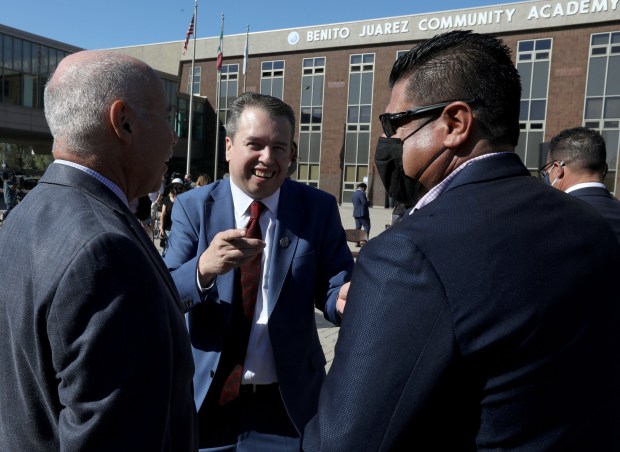The Northwestern Indiana Regional Planning Commission hopes to reduce the cost of State Board of Accounts audits for local governments.
NIRPC has approved a resolution toward that end and is sharing it with its members for consideration. Cedar Lake Councilman Robert Carnahan said his town’s attorney is preparing a resolution.
The regional planning agency, serving Lake, Porter and LaPorte counties, pays $22,000 a year for its state audit, Carnahan said.
NIRPC attorney Dave Hollenbeck also serves a Porter County conservancy district that had to pay $17,000 for a state audit. That’s a big bite out of the district’s small annual budget.
The auditor who visited the district had little experience with local government accounting, which differs from processes used in the private sector. “The auditors who walk in, you’re educating them and teaching them about local government accounting,” Hollenbeck said.
Gary Mayor Eddie Melton said he believes the State Board of Accounts was given more money for accountants in Melton’s last session of the Indiana General Assembly because of the influx of federal American Rescue Plan Act money.
The many federal ARPA grants will require a lot of extra attention, NIRPC Executive Director Ty Warner said.
LaPorte Mayor Tom Dermody is NIRPC’s current chairman. He encouraged any members with processes that can be used to help local governments speed up audits to share their ideas.
A meeting with State Board of Accounts representatives was promising, he said. “I thought it overall brought a quality discussion.”
Audits during budget-writing season are especially stressful for local governments, he said.
In September, he hopes, clerk-treasurers will be able to meet to discuss ideas.
In other business, the NIRPC executive board decided Thursday that although Valparaiso and Shorewood Forest were carved out of the Chicago urban area by the U.S. Census Bureau, it won’t make a difference in how federal transportation funds are spent in Northwest Indiana.
Director of Transportation Thomas Vander Woude explained the funding implications.
Urban areas are grouped according to population size. Anything over 200,000 is the largest group. That’s most of Lake County and Portage. Valparaiso and the Shorewood Forest subdivision, and points in between, are in the second group, with a population between 50,000 and 200,000. In theory, the smaller group would get less federal funding.
Twenty years ago, a similar break turned Michigan City and LaPorte into a separate federally designated urban area, Vander Woude said.
The Valparaiso/Shorewood Forest urban area is different from Michigan City/LaPorte, however. First, Valparaiso is contiguous with the larger urban area and could well be absorbed into the larger area as a result of a future census.
Second, existing projects in the Valparaiso area already are being funded with money from the larger district. If funded solely through money that would be allocated to its own area, based on population, some of the projects already underway would have to be abandoned.
Instead, the larger urban area and Valparaiso will combine funding and essentially ignore the split.
The bottom line is that everyone benefits, Porter County Surveyor Kevin Breitzke, a longtime NIRPC representative, said. “I was impressed they wanted to continue to be part of Group 1 for all of this,” he said.
In contrast to the Michigan City/LaPorte area, being contiguous to the larger urban area means there may be projects that cross between the two areas, Vander Woude said.
LaPorte County Council member Justin Kiel asked why Michigan City and LaPorte are separate from the rest of the group in competing for funding. What happens if a project from those two cities is bigger than the funding allows? And what happens with funding for smaller communities like Hebron and LaCrosse?
There’s strong competition for funding within the larger urban area, Vander Woude said. Smaller areas like Hebron and Lakes of the Four Seasons generally aren’t going to qualify for federal transportation funding, he said.
Kiel asked if there’s a list of winners and losers among communities in Northwest Indiana in regardtor federal transportation funding.
NIRPC doesn’t keep that kind of list, but the annual report shows where funding goes, Warner said. The intent is to work cooperatively to identify the best projects, not single out communities. “We are really doing our best to look at actual metrics,” Warner said.
“I agree with that. It should be performance-based,” Kiel said.
Doug Ross is a freelance reporter for the Post-Tribune.



